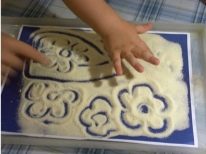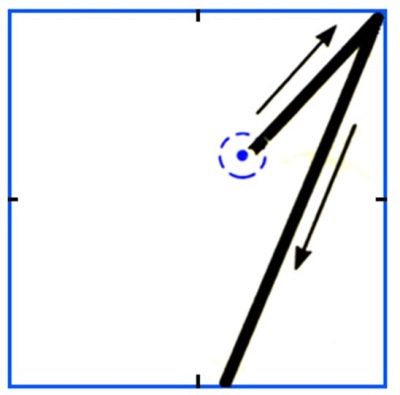How to write numbers 1, 2 and 3?
Every mother wants to be proud of her child, so she tries to teach him as much as possible. Essential skills - reading and writing. Learning to write at home will affect the success of the child at school, his handwriting, so you should approach this in detail.
Suitable age for learning
Do not rush to plant your child for a notebook, if it has only recently learned to hold a pencil tightly in hand. The problem of many modern parents is that they see in their children a chance to show and express themselves. After all, the growing prodigy can boast to friends. Who, if not parents, spotted and developed his abilities? But it is impossible to rush into training, as well as to be late with it.
Before you teach your child to write numbers, you need to teach him to count to ten. Usually a child learns this by five years.
In three or four years, children are usually restless. They are difficult to sit for some occupation, they do not focus on one thing, they can not concentrate. If the child himself does not have the desire to learn how to write numbers, do not force him. In the end, he will perform the task at your request, but he will do it quickly, without much enthusiasm, carelessly, if only to get rid of him. It will be the beginning of the formation of illegible, ugly handwriting.
If you do decide to take up this business (to teach your child to write literacy yourself), act correctly. Up to five years of training, oral work in a playful way, and at five or six, the baby may already begin to try his hand in a letter. Especially since this is just the age for preparing for school. Waiting for something new and meaningful child will be withTry to prepare yourself as best you can for this stage of your life.
What is useful training?
The result of good proper training will be not only the ability of the kid to display numbers:
- Classes in the study and writing numbers with visual materials help to develop the creative abilities of the child.
- In the process of learning, you communicate with your child, spend time with him, become for him a mentor, friend, helper.
- Developed fine motor skills.
- The kid makes the first attempts to connect logical thinking.
- Mathematical abilities, attention, memory are developed.
Try to develop in your child from an early age the desire to learn something new, and not just fulfill your command. On how you will behave, will depend on the further development of its self-development, self-education and self-control.
Learning numbers
You can study the figures with a crumb in different ways - if only he was not bored. You must always fuel his interest in this topic. For example, contact your kid's favorite cartoon characters. Maybe one of them looks like a number. Or it will be the heroes of the book.
At all appeal to his imagination. Let him think and tell what the number 2 resembles or resembles, for example. If it is difficult for him, find the most suitable illustrations and show them. Perhaps it will wake his fantasy. Use as often as possible proverbs, sayings, aphorisms, riddles, puzzles with the numbers being studied.
Draw a figure in the air. Let the child guess it, and then repeat it. You can also draw on sand, snow, flour or semolina.
Prepare figures in the form of numbers (can be made of cardboard) and give the child a hand. Let him study their forms, outlines.
You can memorize numbers with clock face and calendar. Let him find the numbers you call, or the numbers you show. You can associate numbers with daily activities or important events. For example, two in the afternoon is a quiet hour. January 1 - New Year.
Let him look for numbers everywhere and anytime, wherever you are: in the store, on the bus, in the park, at home or away.
You can assign the task to lay out the studied figure by means of guarantee. It can be anything: calculating sticks, pencils, buttons, toys, etc.
Most importantly, interest, enthrall the baby and do not let him be bored. And, of course, learn with him through to ten.
Training
Before teaching a child how to write, it is necessary to develop fine motor skills of hands. And also to explain how to sit (posture should be formed from early childhood) and hold a pencil.
Among the exercises developing small-motor function, the following can be singled out:
- beadwork;
- modeling from plasticine, dough or clay;
- cutting out of paper, cardboard various figures;
- paper modeling;
- designing, picking up a jigsaw puzzle;
- coloring pages;
- applications of various materials;
- drawing;
- recipe;
- fingering cereals.
Before you give a whole number to your child, you need to practice it in writing its individual elements: lines, hooks, circles, ovals, semi-oval, sticks, etc.
Child need well study the cell. He must know all its boundaries, where the center, the corners, the middle of each edge. You should also immediately clarify that the figure should remain inside the cell, not go beyond it. Also needed put the angle of inclination, and so that the preschool child would observe it. To do this, draw a segment from the upper right corner of the cell to the lower border, more precisely, to its middle.
Learn to write pre follows points. Let the baby lead them around in the record, and a figure will be born before his eyes. This is a good preparatory stage, and a kind of positive reinforcement. Scarce will see that the number is obtained and rejoice his success.
Step-by-step spelling explanation
The baby must learn and remember that the height of the digit is equal to the height of the cage. The figure fills a larger cell space. The part of the digit that is displayed in the right part of the cell is in contact with its right limit.
Number 1
We draw a straight line from a point located slightly above the center of the cell to the upper right corner. Without removing the pencil, draw a straight line almost to the middle of the bottom border. The end point is slightly to the right of the center.
Number 2
From above in the right sector we draw half-crotch. It occupies half of the right upper quarter of the cell. Continuing the semi-willow we lead a straight line to the middle of the bottom side. From this point we lead a winding line to the lower right corner: round up, down and up again.
Number 3
We make a small semi-oval in the upper sector of the cell to the right, stopping just to the right of the center. The rounded parts should touch the top and right edges. Without interrupting, we draw the exact same oval, only slightly larger than the top one. The end point is slightly above the middle of the lower border of the cell.
For training, get the math book. On one line repeat one number many times. You can buy a stencil and trace the numbers on it. The main thing is that the child does not lose interest in this activity.
Engage every day for about twenty minutes, so that was the result.
For information on how to write numbers, see the following video.












































